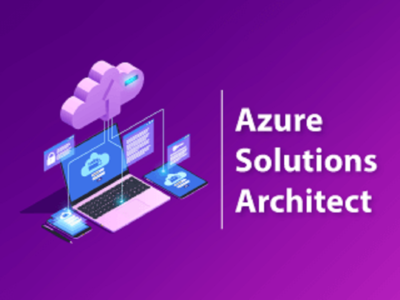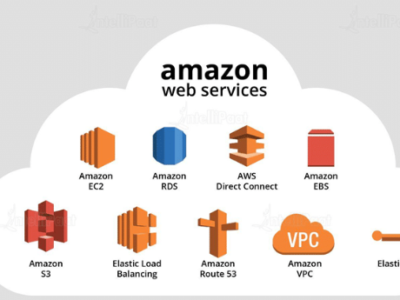✅ Accredited by the Council of Higher Education
✅ Authorized Exam Center for All Certificates.
✅ In-person/Classroom & Online Live Classes
✅ Exam Prep Boot Camp
✅ Interview & Job Prep Boot Camp
✅ Real-Life Working Environment
✅ No IT Background Required
✅ Excellent supporting team
✅ Excellent Success Rate
✅ Course completion certificate
Job Title:
✅ Cloud Engineer
✅ Cloud Engineer Architect
✅ Cloud Engineer Admin
✅ Cloud Solutions Engineer
✅ Cloud Solutions Architect
✅ Cloud Solutions Admin
AZ-104-Microsoft Azure Administrator
Module 1: Introduction to Cloud computing
- Understanding different Cloud Models
- Advantages of Cloud Computing
- Different Cloud Services
- Cloud vendors
- What is Cloud Computing
- History & Fundamentals of Cloud Computing
- WhyCloud
- Cloud Architecture
- Types of Cloud
- Cloud Service Models
- IaaS
- PaaS
- SaaS
Module 2: Microsoft Azure Platform
- Introduction to Azure
- Azure Features
- Azure Services
- Azure Management Portal
- Azure Advantages
- Managing Azure with the Azure portal
- Managing Azure with Windows PowerShell
- Overview of Azure Resource Manager
- Azure management services
Module 3: Microsoft Azure Subscriptions
- Assign administrator permissions
- Configure cost center quotas and tagging
- Configure Azure subscription policies at Azure subscription level
- Types of subscriptions
Module 4: Create Storage accounts and Store the files
- What is the storage account?
- Types of storage accounts
- Types of storages(Blob,file,table,queue)
- Create blob container
- How to create file storage and upload the files.
- How to deploy the static site in blob storage?
- How to deploy static application in storage account
Module 5: Implementing and managing Azure networking
- Overview of Azure networking
- Implementing and managing Azure virtual networks
- Configuring Azure virtual networks
- Configuring Azure virtual network connectivity
- What is subnet
- Classes of IP address (Class A, Class B, Class C, Class D)
Module 6: Implementing virtual machines
- Overview of Azure Resource Manager virtual machines
- Planning for Azure virtual machines
- Deploying Azure Resource Manager virtual machines
- IP address
- Assign the Dynamic and static IP address
Module 7: Managing Virtual Machines
- Configuring virtual machines
- Configuring virtual machine disks
- Managing and monitoring Azure virtual machines
- How to add the disks to VM?
- How to extend the disks?
- How to change the Site of VM
Module 8: Create, Manage and deploy the applications in VM(Azure)
- Create VM with windows OS
- Install IIS servers
- Host .NET applications on IIS
- Enable the Network security gateway to access to access the site from outside.
- Create VM with Linux
- Deploy the apache tomcat server
- Deploy Java application.
Module 9: Implementing Azure App Services
- Introduction to App Service
- Planning app deployment in App Service
- Implementing and maintaining web apps
- Create the .NET/Java/PHP web apps
- Monitoring web apps and Web Jobs.
- Implementing mobile apps
Module 10: Planning and implementing storage, backup, and recovery services
- Planning storage
- Implementing backup and restore the files and folders
- Implementing VM backups.
- Implementing VM restore.
- Implementing Azure Backup
- Planning for and implementing Azure Site Recovery
Module 11: Planning and implementing Azure SQL Database
- Planning and deploying Azure SQL Database
- Implementing and managing Azure SQL Database
- Managing Azure SQL Database security
- Monitoring Azure SQL Database
- Managing Azure SQL Database business continuity
- Migrate the on-premises DB to Azure cloud
- Create database in on-premises and synch with azure cloud
Module 12: Implementing PaaS cloud services
- Planning and deploying PaaS cloud services
- Managing and maintaining cloud services
- Deploying a PaaS cloud service
- Configuring deployment app services Deployment slots.
- Monitoring cloud services
Module 13: Configuring alert and metrics for VM /App services
- Managing and configuring alerts in Azure could
- Deploying a alerts for cloud app service
- Deploying alertsfor VM.
- Monitoring cloud services
Module 14: Implementing Azure Active Directory
- Creating and managing Azure AD tenants
- Configuring application and resource access with Azure AD
- Create multiple directories.
- Create the domains
- Overview of Azure AD Premium
- Administering Active AD
- Configuring Multi-Factor Authentication
Module 15: Managing Active Directory in a could environment
- Migrating on-perm active directory users to Azure could.
- Configuring directory synchronization
- Synchronizing directories
Module 16: Manage resource groups
- use Azure policies for resource groups
- configure resource locks
- configure resource policies
- identify auditing requirements
- implement and set tagging on resource groups
- move resources across resource groups
- remove resource groups
Module 17: Managed role based access control (RBAC)
- create a custom role
- configure access to Azure resources by assigning roles
- configure management access to Azure, troubleshoot RBAC, implement RBAC policies, assign RBAC Roles
Module 18: Traffic manager
- Introduction to Traffic manager
- Routing methods(Priority,Weighted,Performance,Geographic)
- How to configure different routing methods
- What is end point
- How to add the servers to traffic manager?
Module 19: Backup and restore operations
- How to take application backup
- Perform backup and restore operations for VM.
- Perform backup and restore operations for File storage.
Module 20: PowerShell
- What is windows PowerShell.
- Advantages of PowerShell.
- What is the Azure CLI?
- How to automate the activities using azure CLI (PowerShell).
Module 21: ARM
- What is ARM Template?
- Advantages of ARM templates.
- How to create multiples VM using ARM template?
Module 22: Terraform
- What terraform
- Advantages of terraform
- IAAC
- Build/deployment/Terraform
- Deploy solutions using Terraform template
Module 23: GitHub-MS
- What is GitHub?
- Integrate GitHub with appservice/application
- GitHub advantages.
- Clone GitHub to location computer.
MicroSoft Azure DevOps (AZ 400)
MicroSoft Azure DevOps Concepts (SAAS)
Module 1: Introduction to Azure Cloud Computing
- Understanding Cloud Computing
- Benefit and Feature of Cloud Computing
- Explain on Platform as a Service (PaaS), SaaS, IaaS
- Cloud Trends
- Public and Private Cloud
- Principles of Parallel and Distributed Computing
- Depth explain on Virtualization
- Architecture of Cloud Computing
Module 2: Getting Start with Microsoft Azure
- Overview of Microsoft Azure
- Explains on Azure Platform
- Getting Access to Azure
- Explain on Azure Resource Manager
- Using Azure Portal
- Manage Azure using Azure Portal
- Manage Azure using Power Shell
- Understanding on Management Services
- Create and View Resources
- Explain on Azure services
Module 3: Working with Azure App Service
- Overview of App Service
- Deployment in App Service
- Deploy and maintaining web Apps
- Configuring app with deployment slots
- Configuring the app with DevOps.
Module 4: Introduction Azure DevOps
- Azure Boards(Agile)
- Azure Repos
- Azure Pipelines
- Azure Artifacts
- Azure Test Plan
Module 5: CI/CD Process Using Vsts and Azure
- Task Creation Based on the Application Repository
- Create the CI Process
- Build Setup
- Authenticate Build to Azure Web service
- Failover Mechanism
- Test Cases Build
- Build alerts Configuration
- IAAS Deployments
- PAAS Deployments
- Alerts Configuration Using Azure
- Build And deployments through PowerShell
Module 6: Source Control Management (SCM)
- Version controlling mechanism using Azure Repos
- Branching & merging strategy
- Various branching & merging strategies and their scenarios
Module 7: GitHub
- What is GitHub
- How to manage the code in GitHub
- Manage and deploy the code in GitHub
- Manage the .NET and Java code in GitHub.
Module 8: Continuous Integration (CI)
- Continuous Integration using Azure Pipelines
- Pipeline creation
- Environments
- Tasks
- Code Coverage
- Gated Builds
- Best Practices
Module 9: Continuous Deployment (CD)
- Deployment Pipeline using Azure Pipelines
- Automation of Application Configuration (web.config, app.configete)
- Automated workflows for Deployments
- Gated Deployments
- Integration with Artifact management
- Roll-backs
- One-click deployment
Module 10: Release Management
- Release Automation using Azure Release Pipeline
- Fundamentals of SCRUM boards in Azure DevOps
- What sprint
- Backlogs/Sprint iteration
Module 11: Agile Methodology
- How can we create task in Agile
- How can we create sprint/work item in Agile?
- Public/Private projects.
Module 12: Docker Fundamentals
- What isDocker
- Why useDocker
- Docker Fundamentals &Terminology
- DockerContainers
- Containers vs VirtualMachines
- Advantages ofContainers
- DockerImages
- DockerRegistries
Module 13: AZURE AKS Fundamentals
- What isthe AKS.
- How to implement AKS.
- How to Deploy the multiple applications on AKS?
- How to manage clusters in AKS?
Course Features
- Lectures 35
- Quizzes 0
- Duration 48 weeks
- Skill level All levels
- Language English
- Students 3
- Assessments Yes
Curriculum
- 12 Sections
- 35 Lessons
- 48 Weeks
- Class Meting Link1
- Class Record by Amit1
- Implement and manage storage3
- Manage Azure identities and governance3
- Deploy and manage Azure compute resources4
- Configure and manage virtual networking5
- Monitor and back up Azure resources4
- Implement and manage storage3
- Deploy and manage Azure compute4
- Configure and manage virtual networking5
- Monitor and back up Azure resources2
- Introduction to Cloud computing0






